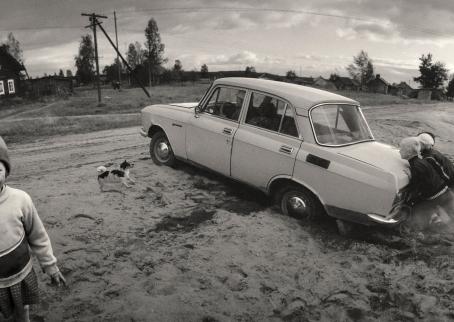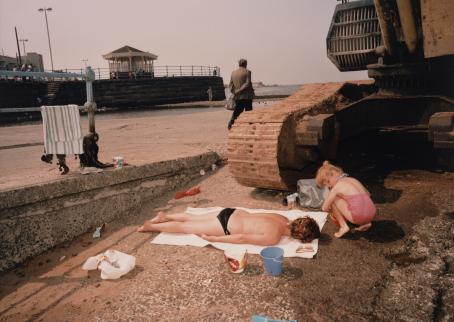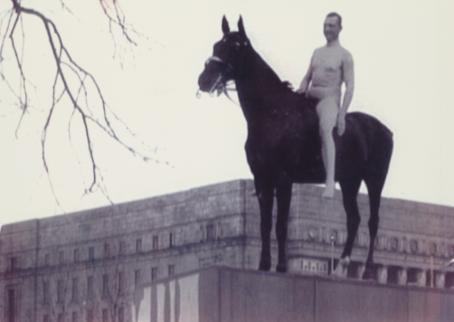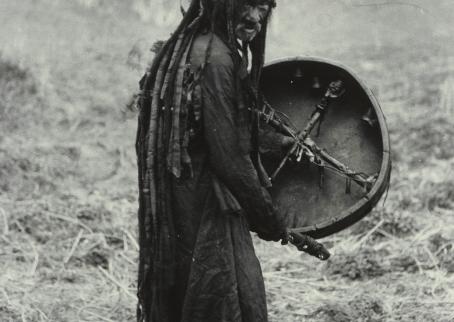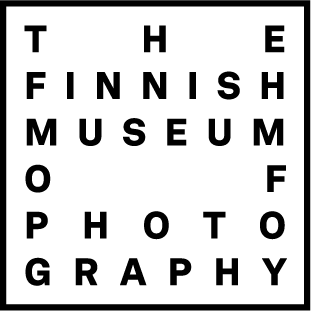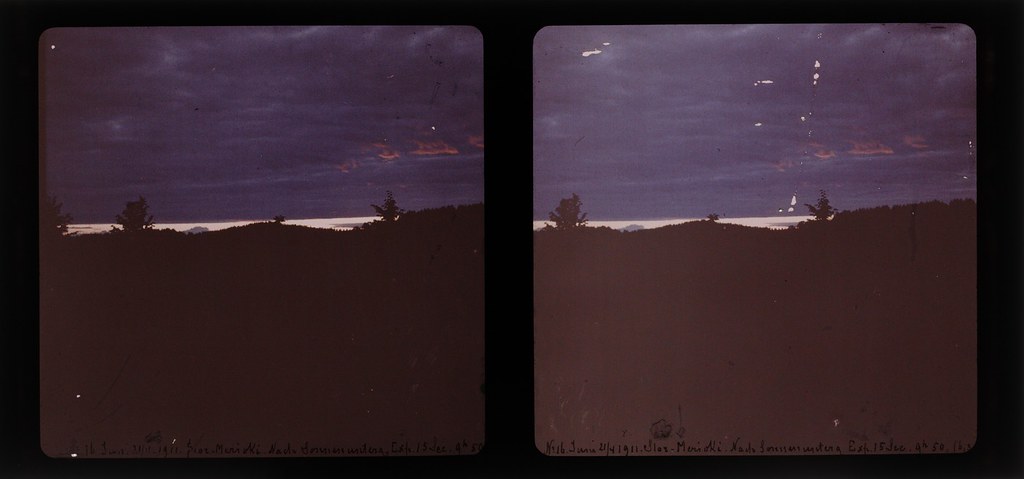
These two colour slides from June 1911 should be viewed through a stereoscope, with which they would merge together into one image with an illusion of depth: an early 3D photograph. It is one of the earliest colour photographs of the natural shades of the evening sky painted by the last rays of sunlight - a subject we still struggle to accurately photograph today, after nearly 110 years of constantly advancing photographic technologies.
Swiss-born factory owner Max Neuscheller was a wealthy man with a taste for the arts and technology of his time. His manor in Karelia was designed and decorated by the masters of Finnish art nouveau. Neuscheller was also among the few that could afford a stereoscopic camera and the newly invented, expensive Autochrome colour plates. He was a contemporary of the artistically ambitious Pictorialist photographers, but his own photography betrays no artistic aspirations: his stereoscopic Autochromes are simple documentations of his house and farm. This image-pair of a moment just after sunset is one of the few that seem to be made only to capture the light of the sky. In the lower edge of each image, Neuscheller wrote down, in his small handwriting, the date, the place (with a spelling mistake; Finnish was a foreign language for him), the moment - which might also be understood as the name of the image (with an abbreviation) - and the exposure time (15 seconds).
The moon and stars were among Neuscheller's interests, and he had a small observatory of his own on the manor grounds. However, he must soon have realised that his photographic equipment was not able to capture the night sky; only the painterly tones just before nightfall. In this image, he divides the surface almost equally between the sky and the ground. We could see the heavy presence of black earth as a bold aesthetic choice, almost implying an underground perspective. In fact, there was less choice involved in the Autochrome than if he had made a negative and then a print. The slide could not be subtly improved, corrected, or manipulated afterwards. The tones were the way they turned out, certainly somewhat darker than what Neuscheller could see with his bare eye, thus leaving out details he had envisioned capturing. The result is what I would call his most artistic photograph, one that might even have pleased the Pictorialist eye.
Sofia Lahti, Curator of Collections
See and download more stereoscopic photos by Neuscheller in the Finnish Museum of Photography’s Flickr here.
